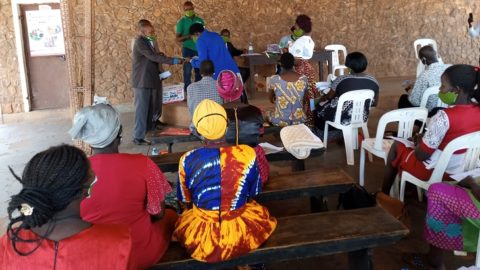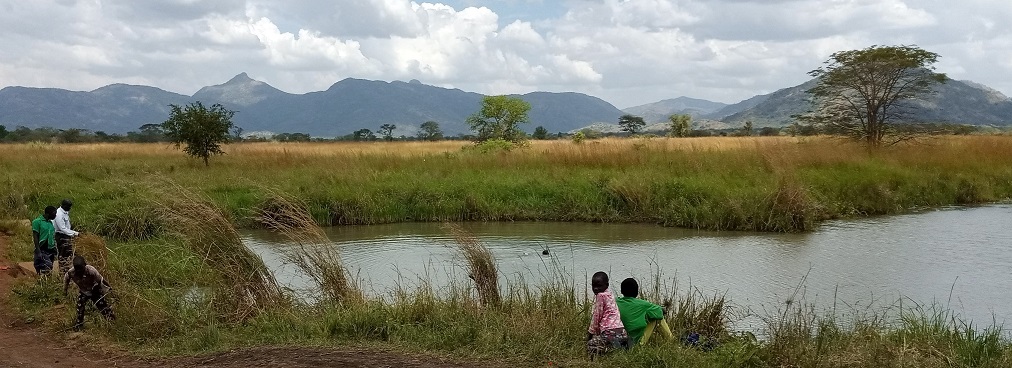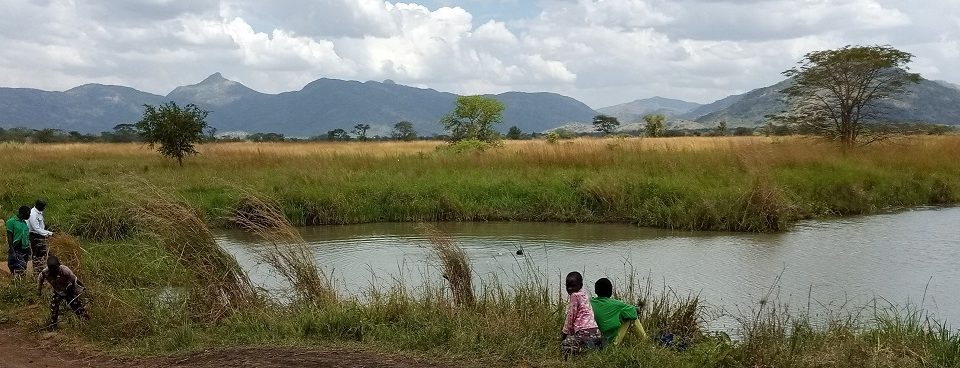Aswa river catchment in Northern Uganda experiences frequent and prolonged droughts due to increasingly unpredictable rainfall patterns. These in turn have serious negative impacts on agricultural land use: shortened growing seasons, hampered crop production, undermined water resources availability, altered food and nutrition security and increased mobility of pastoral communities in search of pasture. This leads to resource-based conflicts among communities and degraded ecosystems. Land degradation activities such as deforestation and wetlands drainage increase the potential flood risk and vulnerability of local communities, infrastructure and economic activities in disaster-prone areas.

Rain-fed agriculture in Abim
As part of concerted efforts to build and enhance the community’s resilience to disasters and climate change impacts, Wetlands International has supported Abim District Local Government and Ministry of Water and Environment to establish in three Micro Catchment Management Committees (MCMCs) for Loyoroit, Angaro and Odongi riverine wetlands systems. The three wetland systems cover an area of 606 square kilometres and provide ecosystem services for 160,000 people in Abim. They form part of the Aswa river catchment that drains most of the northern plateau and north highlands before crossing the border into South Sudan to join the White Nile.
Consultative Stakeholder Forums
Loyoroit, Angaro and Odongi committees were constituted under the framework of Catchment-based Integrated Water Resources Management and Catchment Management Organisation Manual that the Ministry of Water and Environment has been implementing since 2011 through its Directorate of Water Resources Management.
Guided by the Manual, multiple stakeholder representatives were drawn from water users and local environmental committees, women groups, youth groups, religious institutions, elders and opinion leaders, persons with disabilities, village councils, local councils and community-based organisations within Loyoroit, Odongi and Angaro micro-catchment wetlands systems. At each Micro Catchment Stakeholder Forum, 40 members of the respective Loyoroit, Odongi and Angaro Micro Catchment Management Committee were elected by consensus, encompassing gender and social inclusivity. Women constitute one-third of the members in each committee. The three committees are each composed of a chairperson, secretary and other members, and will serve for a term of office of five years.

Representatives from Odongi receiving confirmation letters
Following the committees’ establishment, the Ministry of Water and Environment issued confirmation letters to all 40 elected persons in each committee in which their roles and responsibilities were clearly stipulated. All signed their acceptance letters whose roles are on voluntary basis.
At the forum to constitute the Angaro Committee, the Principal Water Officer and Team Leader of Upper Nile Water Management Zone in the Directorate of Water Resources Management Richard Musoota highlighted the critical ecosystem services provided by the micro-catchments to sustain human kind and how to manage these sources of water in a sustainable, integrated and coordinated manner.

Richard Musoota engaging the Angaro stakeholders before the constitution of the micro-catchment committee
“Deforestation, cultivation on river banks, wetlands drainage, bush burning in the upstream may lead to poor water quality and reduced water quantity in the mid and down-stream of the micro-catchments. If you wish to get clean, safe and adequate water, I encourage you all to work closely together to plan for, manage, conserve, restore and protect water sources such as forests, wetlands, grasslands, woodlands and hills,” stated Musoota.
Micro-Catchment Management Committees’ Functions
Essentially, Loyoroit, Odongi and Angaro Micro-Catchment Management Committees will ensure effective planning and management of water and wetlands resources at the lowest appropriate level – the micro-catchment. They will guarantee coordination and cooperation among stakeholders in the micro-catchment that is vital for the effective management of environmental and natural resources in the micro-catchment.
The main functions of the committees are to:
- Lead the development, implementation and review of a Micro-Catchment Management Plan being formulated on behalf of stakeholders
- Resolve conflicts in the micro-catchment during implementation of activities
- Represent all stakeholders in decision making at each implementation step
- Coordinate the implementation and monitoring of relevant of relevant Acts, by-laws, guidelines, regulations, plans and standards within the micro-catchment
- Inform and support Agago River Sub-Catchment Management Committee on issues related to the regulation of the use and management of water and related resources such as wetlands ecosystems in the micro-catchment.
The ecosystem restoration initiative is part of the three-year Ecosystem-based Disaster Risk Reduction (Eco-DRR) project that uses an Integrated Risk Management (IRM) approach. It involves ecosystem management and restoration such as development of management plans, climate change adaptation and mitigation, and disaster risk reduction while mainstreaming gender in all its activities. Awarded by the European Commission (EU DEVCO) to the UN Environment Programme (UNEP) in collaboration with Partners for Resilience (PfR) represented by the Netherlands Red Cross (NLRC), it focuses on scaling-up Eco-DRR interventions.

